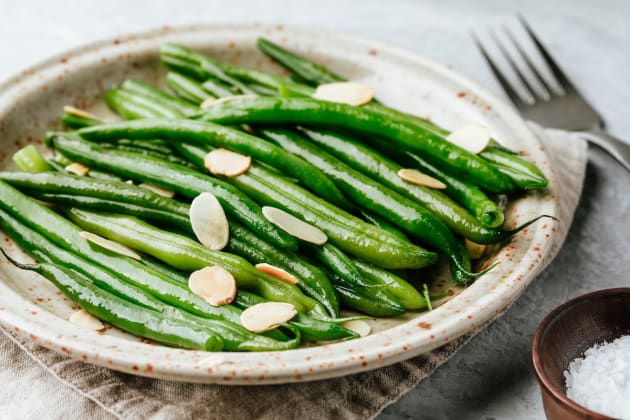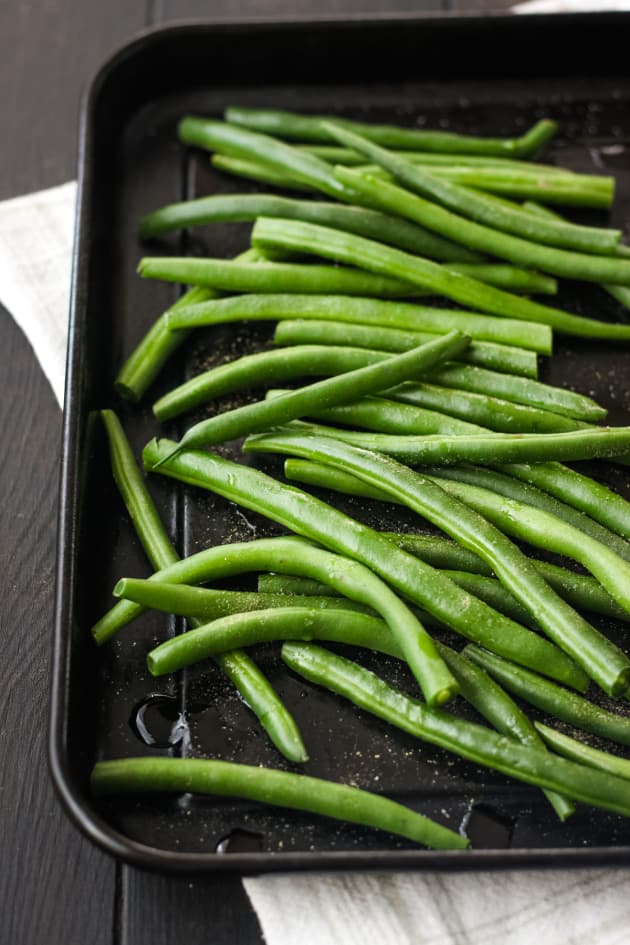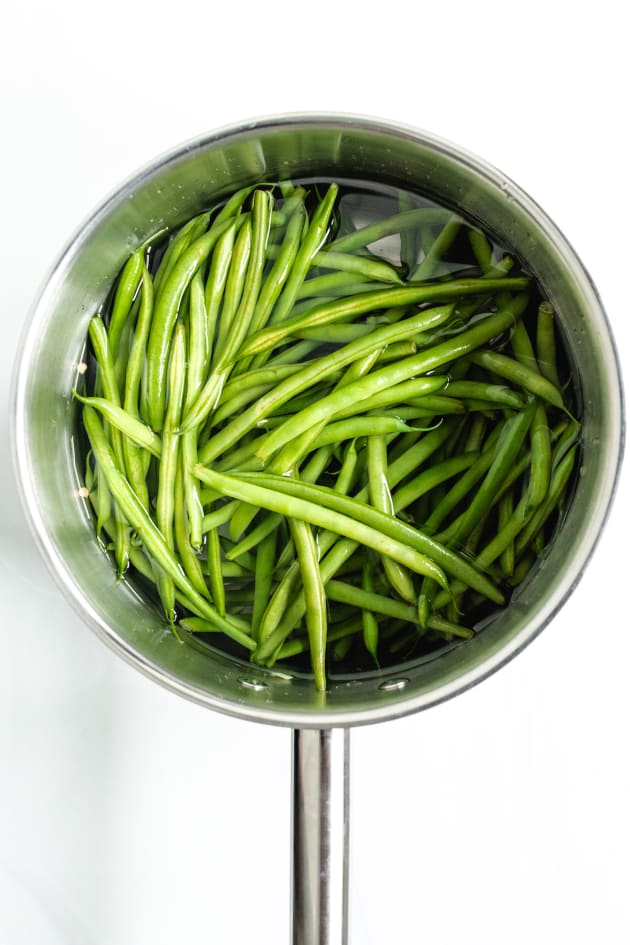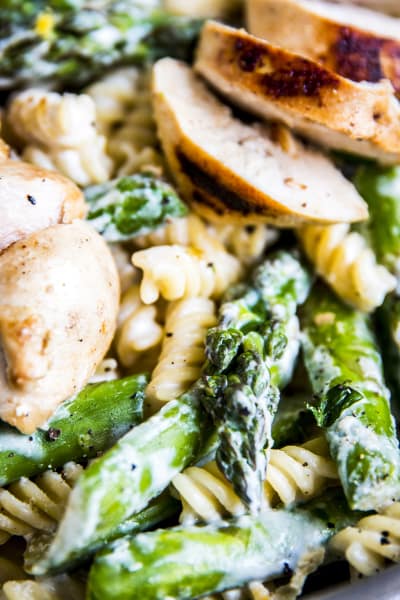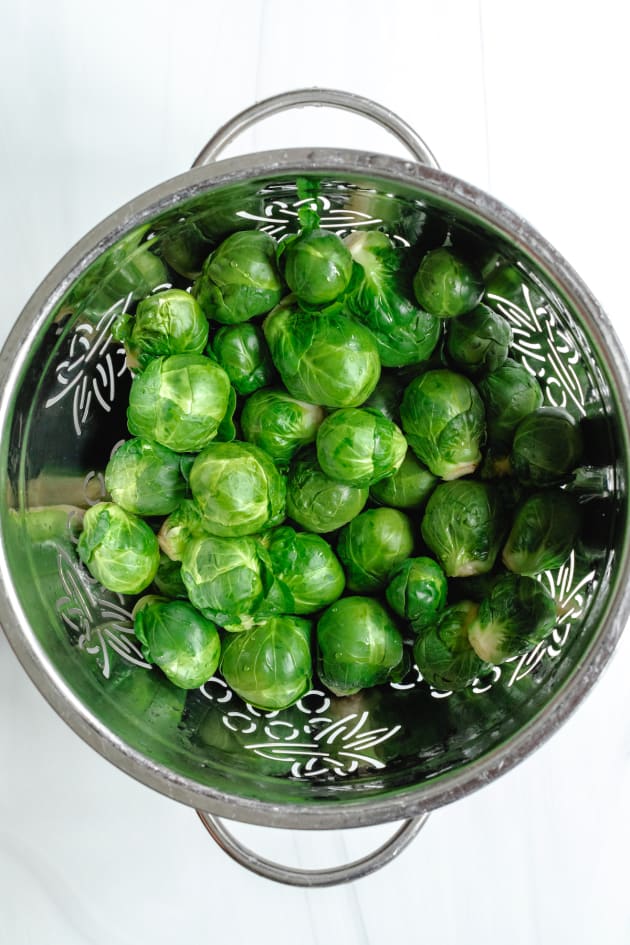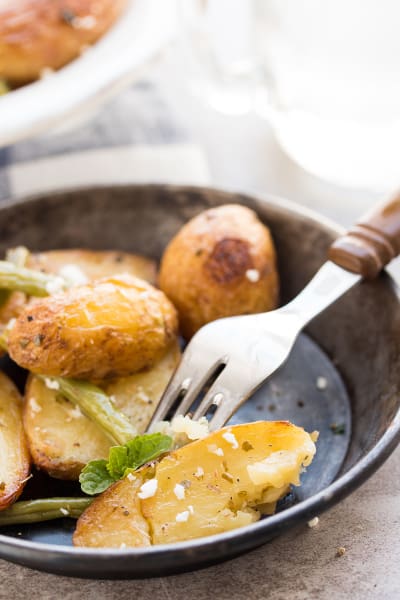What Is Blanching?
Nicole AustinHave you ever wondered what it means to blanch something? Store or serve crisp, fresh vegetables with this quick and easy method.
Whether you’re looking for a way to store your fresh vegetables for future consumption, hitting up the farmer’s market to store ahead for the winter, or just looking to try something new to save prep time, knowing how to blanch fruits and vegetables is super handy kitchen technique.
Blanching is super quick and easy to do and in addition to being a great way to prep veggies before freezing and storing them, it's also a great way to keep the bright color and crisp texture of produce when cooking.
What Is Blanching?
Blanching is a preparation process that involves placing food into boiling water, or steaming it, briefly then placing it in ice water to stop the cooking process.
This process retains the nutritional quality of the vegetable and maintains a fresh, crisp texture. The time required to blanch vegetables varies by type.
During blanching, you do not want to overcook or fully cook vegetables - this leads to loss of flavor, nutrients and color, which you want to avoid.
On the other hand, if you fail to blanch long enough, enzyme activity will be increased and the quality of vegetables will suffer.
Why Blanch Fruits and Vegetables?
You may be wondering why you would need to blanch vegetables. There are many reasons to blanch your fresh vegetables, including:
- Minimizing the loss of nutrients during the cooking process
- Cleansing the surface of your fruits and vegetables of dirt and bacteria
- Stopping enzyme activity - active enzymes will cause the loss of flavor, texture, and color.
- Shortening future cooking time whether you're using your veggies right away or freezing for later us
- Making vegetables look more appealing - for instance, the blanching process makes green vegetables appear brighter
- Denaturing enzymes that make vegetables bitter resulting in a brighter, more palatable flavor
How to Blanch
Blanching fruits and vegetables is easy and can be done in bulk. The most common and simple technique is the boiling method - the steps are easy peasy!
You will need:
- A large pot of fresh water
- Washed vegetables, optionally peeled if that is your preference
- If you plan to use your vegetables chopped or cut, you will want to do this prior to blanching
- A pot or large bowl of ice water large enough to submerge your vegetables
- Colander for draining
- Paper towels to dry your blanched vegetables
- Freezer bags or vacuum seal system for storage if storing for later
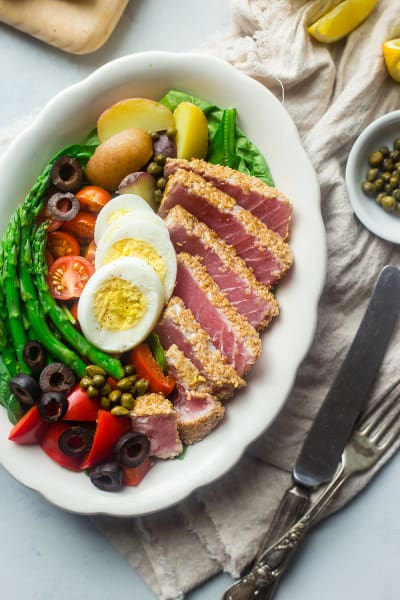
To blanch produce for storing or prepping, follow these simple steps:
- Bring a large pot of water to a rolling boil.
- In the meantime, wash and prep your vegetables, then cut or chop them to desired size.
- Drop vegetables into boiling water.
- Once the water returns to a boil after the introduction of the vegetables, you will begin to time your blanching process. Use a timer for best results.
- Remove the vegetables immediately once the timer goes off. Plunge vegetables directly into ice water. Cooling them quickly is essential for the blanching process as it stops the cooking, which would otherwise continue.
- Drain vegetables in colander once completely cooled, and lay out flat on paper towel to dry.
- Portion out your vegetables as desired and seal them in freezer safe bags or using a vacuum seal system.
- Place in freezer to enjoy them later! Use within one year for best flavor.
How Long Should You Blanch Vegetables?
It's important to note that blanching time varies depending on what vegetables or fruits you are preparing.
Light, thin spinach requires only 10 seconds of boiling time, for example, whereas a firmer vegetable like cauliflower takes longer. For instance, blanching carrots requires up to five minutes.
Green beans are another popular vegetable to blanch. If you know how to blanch green beans already, you'll know doing so takes roughly two to three minutes.
Many people find they have an overabundance of squash or zucchini, which can be blanched in a minute or so, similar to broccoli, kale, and asparagus.
Is Blanching Healthy?
Blanching your vegetables results in tastier food, but it's also widely considered a healthful way of prepping most produce.
It's estimated that blanching preserves up to 80% of the nutrient content of fresh vegetables and fruit. It also maintains beneficial levels of sulforaphane, which is a known cancer-fighter.
Blanching inherently increases the fiber content of many vegetables, versus cooking thoroughly, and encourages busy people to prepare vegetables that are as fresh as possible to get even more vitamins and minerals.
What’s the Difference Between Blanching and Parboiling?
So, what's the difference between blanching and parboiling? It may seem subtle, but there is, in fact, a difference between the two.
Blanching is used to preserve fresh vegetables so they can be stored for future use - or they may be eaten right away in dishes that are looking to preserve the crunch of fruits and veggies.
What is parboiling? Similar in technique and just as easy, parboiling is the process of partially cooking ingredients to finish cooking with another method.
Parboiling is intended to partially cook vegetables or even meat to expedite the cook time such as parboiling ribs before making our smoked ribs recipe.
If you know how to parboil something, you basically know how to blanch - just make sure to add the extra step of plunging your veggies in an ice bath.
From there, the possibilites are endless! Add crisp, blanched asparagus to our Asian nicoise salad or our delicious chicken asparagus pasta recipe.
Planning a dinner party and need some inspiration?
How about looking for a new slow cooker dinner idea?
We’ve got you covered in our ever-growing Facebook group! If you’re not a member yet, why not?!

We’re chatting cooking techniques, dessert ideas, and everything in between. If you’re already a member, invite your friends to join us too!
Nicole is a self-published author of fiction novels, and a lover of food and spending time in the kitchen with her six children. She lives in coastal Maine where she loves exploring new recipes especially those that can save time, money and wow a crowd.


